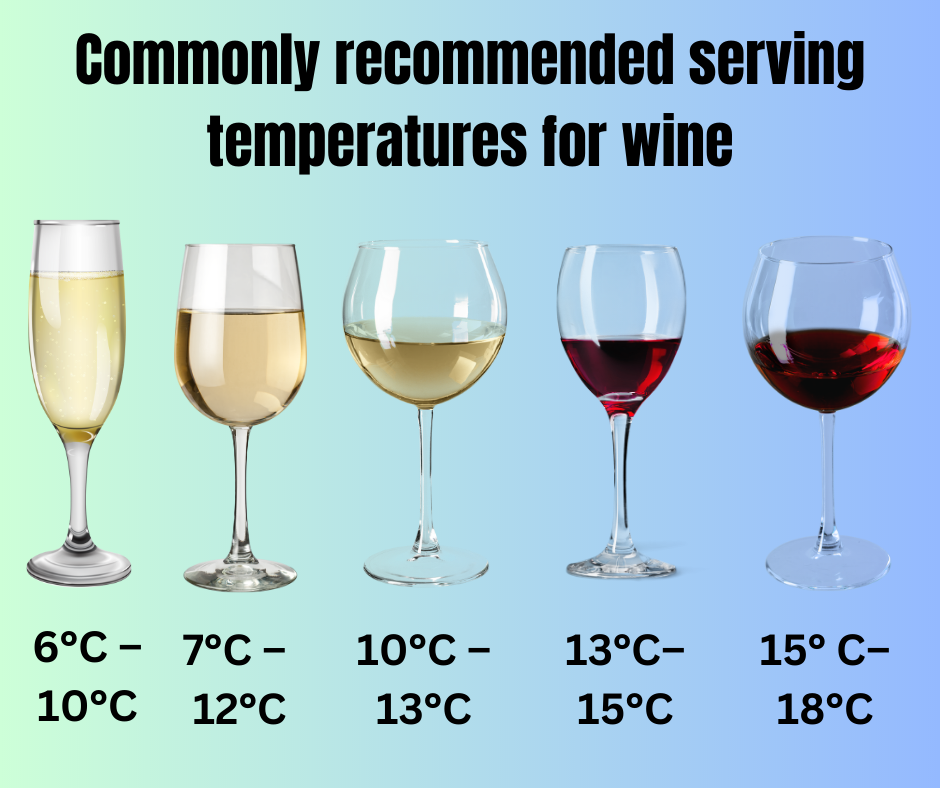Let’s be real—nothing divides a dinner table faster than the sight of an ice cube clinking into a glass of wine. It’s almost as if someone insulted grandma’s lasagna. Some see ice as a quick fix for warm wine; others treat it like heresy. In my case, it’s a recurring standoff with my brother. He swears by it, while I see it as a crime against good taste. So, what’s the deal here? Is dropping ice into wine a harmless shortcut or a flavor felony?
Why Wine Temperature Actually Matters

If you’ve ever had warm Chardonnay or ice-cold Merlot, you know temperature can make or break a glass of wine. That’s because wine is all about balance—flavors, aromas, acidity, and alcohol. Temperature acts like a volume knob, dialing certain notes up or down.
- Red wine usually shines between 60–68°F (15–20°C). That slight chill helps soften tannins and lift aromas.
- White wine and rosé prefer a crisp 45–55°F (7–13°C). Too warm and they taste flabby; too cold and they go mute.
- Sparkling wines love the cold—around 40–50°F (4–10°C)—to keep their fizz snappy.
Serving wine outside these ranges is like listening to music with one speaker unplugged—still good, but not what the artist intended.
The Science of Chilling Wine Fast
When you pop a bottle into the fridge, it cools slowly—roughly 1°F every 3 minutes. Want it chilled now? Ice cubes come to the rescue, right? Well, kind of.
Yes, ice chills fast. But as it melts, it releases water, thinning out the wine and dulling the flavor. Alcohol becomes less prominent, but so do the fruit notes, tannins, and complexity. It’s like watering down espresso—you’ll still get caffeine, but where’s the soul?
So, the science says: chilling = good; dilution = meh.
The Pros and Cons of Ice Cubes in Wine
Let’s not ignore the elephant—or should we say ice bucket—in the room. Ice has its perks:
Pros:
- Fast chill on a hot day
- Convenient, especially when fridges or chillers aren’t handy
- Refreshingly light when sipping casually outdoors
Video : 🍷Why You Shouldn’t Put Ice In Your Wine 🍷
Cons:
- Dilutes flavor and alters texture
- May change aroma profile
- Seen as improper in formal wine settings
Basically, it’s the difference between a quick fix and a carefully curated experience. Ice can save the moment but might sabotage the magic.
Smart Alternatives to Chill Wine Without Watering It Down
You don’t have to settle for compromise. There are smarter ways to cool your wine without turning it into flavored water.
- Wine chiller sleeves: These gel sleeves live in your freezer and slide over the bottle like a glove. Quick, even cooling.
- Ice bucket + water combo: The mix of ice and water chills bottles faster than ice alone. Pro tip: add a handful of salt to lower the freezing point.
- Frozen grapes: Pop a few into your glass. They keep the wine cold and look fancy—no dilution.
- Stainless steel or stone “ice cubes”: These reusable gems chill without melting. Win-win.
If you’re serious about wine—or just hate it watered down—these options are total game changers.
The Role of Etiquette (and Judgment) in the Ice Debate
Let’s talk wine snobbery for a second. In upscale circles, adding ice to wine is a no-go. It’s viewed as a sign you don’t “get” wine. That’s partly because winemakers labor over the perfect blend, balance, and aging process—and ice sort of throws that all out the window.
But here’s the twist: wine isn’t just about following rules. It’s about enjoying the drink. If you love it with ice, who’s to stop you?
Etiquette has its place, sure. But it shouldn’t rob you of pleasure. If sipping a frosty rosé by the pool brings you joy, etiquette can take a backseat.
Video : Can you add Ice to Wine?
What Wine Experts Really Say About Ice
Ask a sommelier, and most will raise an eyebrow at ice cubes. Still, many also say: “Drink what you like, how you like.” Some even recommend non-melting chillers or frozen fruits as compromise solutions.
Master sommeliers agree on one thing—temperature is critical, but tradition shouldn’t dictate enjoyment. They want you to love what’s in your glass, not stress over the “correct” way to sip it.
Their advice? Avoid watering down fine wines. But for casual sipping or budget-friendly bottles, do what works for you.
Conclusion: Sip How You Like, Just Know the Trade-Off
At the heart of the debate, both sides have a point. My brother likes his wine chilled and refreshing, no matter what. I prefer it unaltered, just as the winemaker intended. But neither of us is wrong—we just value different things.
The key takeaway? Understand what’s at stake. If you’re opening a $10 bottle on a summer afternoon, toss in that ice if it makes you happy. But if you’re pouring a well-aged Pinot Noir, maybe let it shine solo.
Wine should bring joy, not arguments. Whether you’re a purist or a pragmatist, the goal is the same: enjoying a great glass. So raise your glass—ice or no ice—and toast to drinking it your way.


